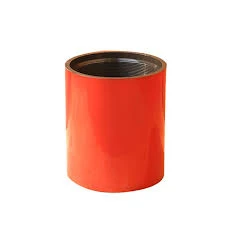- Afrikaans
- Albanian
- Amharic
- Arabic
- Armenian
- Azerbaijani
- Basque
- Belarusian
- Bengali
- Bosnian
- Bulgarian
- Catalan
- Cebuano
- Corsican
- Croatian
- Czech
- Danish
- Dutch
- English
- Esperanto
- Estonian
- Finnish
- French
- Frisian
- Galician
- Georgian
- German
- Greek
- Gujarati
- Haitian Creole
- hausa
- hawaiian
- Hebrew
- Hindi
- Miao
- Hungarian
- Icelandic
- igbo
- Indonesian
- irish
- Italian
- Japanese
- Javanese
- Kannada
- kazakh
- Khmer
- Rwandese
- Korean
- Kurdish
- Kyrgyz
- Lao
- Latin
- Latvian
- Lithuanian
- Luxembourgish
- Macedonian
- Malgashi
- Malay
- Malayalam
- Maltese
- Maori
- Marathi
- Mongolian
- Myanmar
- Nepali
- Norwegian
- Norwegian
- Occitan
- Pashto
- Persian
- Polish
- Portuguese
- Punjabi
- Romanian
- Russian
- Samoan
- Scottish Gaelic
- Serbian
- Sesotho
- Shona
- Sindhi
- Sinhala
- Slovak
- Slovenian
- Somali
- Spanish
- Sundanese
- Swahili
- Swedish
- Tagalog
- Tajik
- Tamil
- Tatar
- Telugu
- Thai
- Turkish
- Turkmen
- Ukrainian
- Urdu
- Uighur
- Uzbek
- Vietnamese
- Welsh
- Bantu
- Yiddish
- Yoruba
- Zulu
Casing Pup Joints and Their Importance in Oil and Gas Operations
Understanding Casing Pup Joints in Oil and Gas Operations
In the oil and gas industry, the casing pup joint is a crucial component that plays a significant role in the overall efficiency and safety of drilling operations. A casing pup joint, often simply referred to as a pup joint, is a short length of pipe used to connect casing strings or to adjust the length of the casing in a wellbore. This article explores the construction, applications, and benefits of casing pup joints, along with their importance in modern drilling practices.
Construction of Casing Pup Joints
Casing pup joints are typically fabricated from the same materials as regular casing, which includes carbon steel, alloy steel, or corrosion-resistant alloys, ensuring they can withstand the high pressures and harsh environments commonly found in oil and gas wells. Their standard length can vary, but they usually range from 2 to 10 feet. The ends of pup joints are threaded to allow for easy connection to other casing or tubing components, and they may be equipped with various thread types, such as API (American Petroleum Institute) or premium threads, to suit specific well conditions.
Applications of Casing Pup Joints
The applications of casing pup joints are numerous and vital for the successful execution of drilling projects. One of their primary uses is to make up the difference in length when the standard casing does not perfectly match the drilled hole depth. This not only helps to maintain the structural integrity of the well but also aids in the efficient completion of the drilling process. Pup joints are also beneficial in making tight turns or transitions in the casing string, which is particularly useful in directional drilling applications where angles and offsets are involved.
Additionally, pup joints can be used to accommodate changes in well conditions, such as temperature variations and pressure fluctuations. They provide flexibility in the casing design, allowing operators to adapt quickly to unforeseen circumstances while maintaining the necessary safety standards required for oil and gas extraction.
casing pup joint

Benefits of Using Casing Pup Joints
The benefits of incorporating casing pup joints into drilling operations are manifold. First and foremost, they enhance the overall flexibility of the casing string, enabling custom adjustments to better fit specific well requirements. This adaptability is crucial for maintaining the integrity of the wellbore under varying geological and mechanical stresses.
Moreover, casing pup joints increase operational efficiency. By allowing quick adjustments to the casing length or configuration, they can significantly reduce the time and costs associated with drilling operations. Operators can avoid the need for specialized equipment or significant alterations in the drilling plan, which can impact project schedules and budgets.
Lastly, using casing pup joints contributes to the safety of drilling operations. By ensuring a secure and stable connection between different casing segments, they help prevent issues such as casing failure or blowouts, which can have catastrophic consequences both economically and environmentally.
Conclusion
In summary, casing pup joints are essential components in the oil and gas drilling industry, providing flexibility, efficiency, and safety in various drilling applications. Understanding their construction and applications is vital for industry professionals looking to optimize their operations. As technology and methods in drilling continue to evolve, the role of casing pup joints will remain pivotal in ensuring effective and safe extraction of oil and gas resources.
-
Tubing Pup Joints: Essential Components for Oil and Gas OperationsNewsJul.10,2025
-
Pup Joints: Essential Components for Reliable Drilling OperationsNewsJul.10,2025
-
Pipe Couplings: Connecting Your World EfficientlyNewsJul.10,2025
-
Mastering Oilfield Operations with Quality Tubing and CasingNewsJul.10,2025
-
High-Quality Casing Couplings for Every NeedNewsJul.10,2025
-
Boost Your Drilling Efficiency with Premium Crossover Tools & Seating NipplesNewsJul.10,2025







